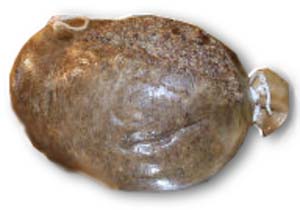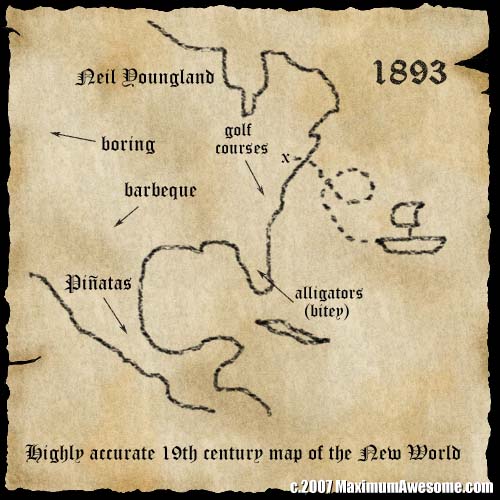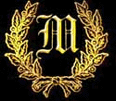
Interlude: Cadbury: the man, the myth, the nemesis of Peter Carl Faberge
A canonical history of the daring chocolatier
Part 3, War on the Floor III
by Dave McAwesomeMalcolm Haverford Cadbury, the pioneer of the cocoa-covered, fondant-centered egg, was a dynamic chocolatier in London's vibrant 19th century dessert industry. "What our cuisine lacks in taste and sophistication, we shall make up for in dessert," he famously said at the 1884 Annual British Imperial Culinary Convention.

Beginning with a small sweets shop in London's scrod-fishing district, Cadbury made his mark by offering bizarre treats in his front window to entice customers. Cat's Hairballs (ball of caramel covered in whispy cotton candy), Bunny Ears (chocolate-covered spinach leaf), and Fish Eyes (hollow globe of sugar painted with colored chocolate) were common sights at the store. None, however, matched his masterpiece: the Cadbury Creme Egg. A hollow chocolate egg shell was filled with a yellow and white fondant creme, which formed the yolk and egg white center.
The origin of fondant
Any chef will tell you fondant is a mixture of sugar and water, cooked then beaten into an opaque cream. This, of course, is a lie. In the 17th century, a British expedition into the deep forests of the African Congo discovered a rare breed of rabbit that reproduced by egg rather than give birth to live young. The eggs, expedition leaders learned, were delicious. The rabbits fed on wild sugar cane. The eggs were sweet and creamy with hints of marshmallow and baby rabbit. The rabbits themselves, however, were vicious creatures. Future expeditions impressed native tribes to raid rabbit nests. Many never made it out of the bush. Although vast numbers of natives would be shipped all over the world to feed the growing demand for slaves, the rabbit eggs were shipped to London in secrecy.
A certain English duke, whose identity has been lost to history, brought one such egg to the colourful Cadbury Choucoulate Shoppe to entice the proprietor to make a special treat. The duke asked Cadbury to create the Chocolate Orgasm, a chocolate-covered...er...with a...gooey, salty center of...er...yeah. Cadbury accepted a half-dozen eggs as payment for the naughty nibblie. He found that by separating then boiling the egg insides with additional sugar he could prevent spoiling. He added a touch of food dye to enhance the natural colors and encased them in a chocolate shell. He had made his first creme eggs. With the sixth, he created an ornate chocolate egg masterpiece to present to the monarchy.
Cadbury vs. Faberge
Cadbury was a contemporary of Peter Carl Faberge, the Russian jeweler who created elaborate, decorative egg-shaped pieces out of precious metals and gems. The two engaged in a bitter rivalry to win the hearts of barons, dukes and kings the world over with their artistic eggery--Faberge with his jewels, Cadbury with his chocolate. By and large, Faberge and Cadbury shared the same royal clients. They began one-upping each other with their designs, often working long hours in secrecy. Cadbury even closed his shop for three months to keep out Faberge's network of spies and informants. They met only during royal presentation ceremonies to deliver their works to their kingly clients. They would engage in childish gamesmanship such as showing up late or 'adding just one more thing' to ensure they presented after the other.
Disgusted upon learning earls and princes were eating his sugary masterpieces, Cadbury began adding massive amounts of curry and cod liver oil to dissuade anyone from devouring his ornate creations. That decision would ruin his reputation amongst the elite class. Cadbury's knighthood was stripped, his contract with the Buckingham Palace kitchen shredded. All remains of Cadbury's half-eaten, cod liver based chocolates had melted by late spring or had been tossed in the Thames.
Revenge of the rabbit
The Sugar Rabbits of the Congo had grown tired of British incursions into their burrows. One of the rabbits, the legendary Phil Philson, snuck aboard a military transport back to Britain. He discovered where the eggs were taken, including Cadbury's Shoppe. By this point, Cadbury was in sorry shape. His normally prodigious chocolate output was a scant trickle. He refused to sell the Cadbury Creme Eggs he'd made for his display window. He stopped jerking off to illustrations of the 1892 winner of the Miss Cockney competition lifting her hoop dress to reveal her lower ankle.
Phil watched as Cadbury began berating potential customers on a daily basis. During one of the chocolatier's increasingly frequent day-naps, Phil began nibbling on a Creme Egg. He came to a startling conclusion, "Our fertilized, chocolate covered fetuses are absolutely scrumptious!" Two days later, Cadbury locked the doors of his shop forever. He'd made his last chocolate egg. Phil, meanwhile, returned to the Congo with the recipe carefully memorized.
"It's time to move on," Phil proclaimed. The Sugar Rabbits couldn't keep chocolate in the Congo. It melted too quickly. Plus, they needed to escape the British egg raiders. "New World or bust!" they shouted. They set up a huge underground burrow in the American northeast and began producing their own Cadbury Creme Eggs. "What the world tastes now is sweet, but the bitter fruits of revenge will be even sweeter...except more bitter," Phil reportedly mumbled incoherently to a Bunny Times interviewer.

Up next: Part 4 continues in Enter the Dragon.
Or go back to the main War on the Floor page.
























